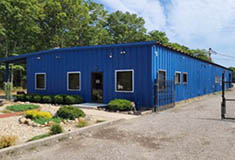Welcome to the fourth industrial revolution: Embracing Artificial intelligence - by Daniel Summers

eVest Technology
First came the loom, then the steam engine, then Henry Ford’s production line and now FANG (Facebook, Amazon, Netflix & Google).
In the early 1800’s, the loom was invented (Industrial Revolution # 1) and displaced 40 textile jobs for every loom. The general populace push-back was of the seek & destroy mentality since this “modern-day” machinery banished their livelihood.
The steam engine (Industrial Revolution # 2), likewise, was viewed by many as a substitution of machinery for human labor that could generate widespread unemployment. The steam-driven assembly line did indeed replace human labor and 50 horses per steam engine.
The Henry Ford production line (Industrial Revolution # 3) is a perfect example of an industrial economy. The model is implicit, widely allocated and commoditized. Consider the tens of thousands of autos produced worldwide every day on a production line.
When we study each revolution, or industry disruption, we begin to realize a succinct pattern relative to each. First, is the innovation, then the stall and finally, rapid expansion.
Think about each example above. The creation of a tool that revolutionizes manufacturing, but displaces thousands of jobs which is the “stall,” which then, finally, is met with monumental acceptance and immeasurable overall economic growth.
Now, the Fourth Industrial Revolution has made billions while the rest of us sat back in awe and were mesmerized by their magic. Think about Gates, Wozniak and Jobs back in the 80’s and 90’s. They were the wunderkind of technology. They developed, designed and “borrowed” technology that never existed before. Similar to Rockefeller, Carnegie and Vanderbilt, these wunderkinds kept their technology highly concentrated and close to their vests. The rest of the world would marvel at their innovations, while being captivated by strange commercials and glossy press releases.
This stall is not a negative. It is a time for gestation. A time for business models to “catch-up” with innovation. A phase when the deep-seated frontier moves mainstream. A time for democratization of the innovations from the very few, to application for the masses. A time to move from an industrial-based economy to a digital economy.
We live in a digital economy, so embrace digital technology. It’s here, so let’s accept it.
Over the next decade, everything we touch will have tech embedded in it. It’s referred to as the “Internet of Things” (IoT). Consider Siri, Alexa, Netflix, Nest thermostats, smart houses, etc. Most everything in our lives will be controlled and driven by technology. All controlled by your laptop five states away.
As opposed to the three previous Industrial Revolutions, technology is changing “things” at breakneck speed. Intel predicts that by 2020, there will be over 200 billion “connected” devices worldwide. McKinsey forecasts that global spending on “connected” devices could reach $11 trillion by 2025. GE predicts the “Industrial Internet” will add up to $15 trillion to the GDP within 20 years. These are staggering predictions that will change our lives and business platforms forever.
And yet, despite all these advances, modern digital technology has yet to really be embraced by the commercial real estate industry. Why? It’s probably because its underserved. As suggested earlier, technology is moving at breakneck speed but hasn’t found commercial real estate quite yet. It’s beginning to nominally trickle in with a handful of crowdfunding platforms, but in general, the surface has yet to be scratched. The opportunity is massive. Predictive analysis alone is a game changer. Think about harvesting investors or valuing an asset with Artificial Intelligence.
Dialing for dollars, for example is an antiquated exercise. Now, we can write algorithms that reach up into “Big Data” API’s and instantly search county recorders offices, Department of Motor Vehicles, social media and the Census Bureau to aggregate prospective high net-worth investors that illustrate a propensity to be accredited. Thousands of prospects can be “touched” within moments through digital marketing. This technology exists yet remains primarily untapped.
Before I founded eVest Technology, I was one of the largest real estate syndicators in the U.S. This background led me to develop a proprietary software to specifically fill the technology void within the commercial real estate arena. My software engineers have embraced Artificial Intelligence to design a capital raising and investor management platform that we now license as a SaaS program for third party real estate professionals. Every feature was designed as if I were the end-user.
As AI continues to evolve, I’m sure we’ll be seeing more examples of modern digital technology inserted into commercial real estate and eventually become a norm.
Daniel Summers is the CEO of eVest Technology in Jacksonville, Fla.
Suffolk County IDA supports expansion of A&Z Pharmaceuticals


The evolving relationship of environmental consultants and the lending community - by Chuck Merritt
When Environmental Site Assessments (ESA) were first part of commercial real estate risk management, it was the lenders driving this requirement. When a borrower wanted a loan on a property, banks would utilize a list of “Approved Consultants” to order the report on both refinances and purchases.









.jpg)